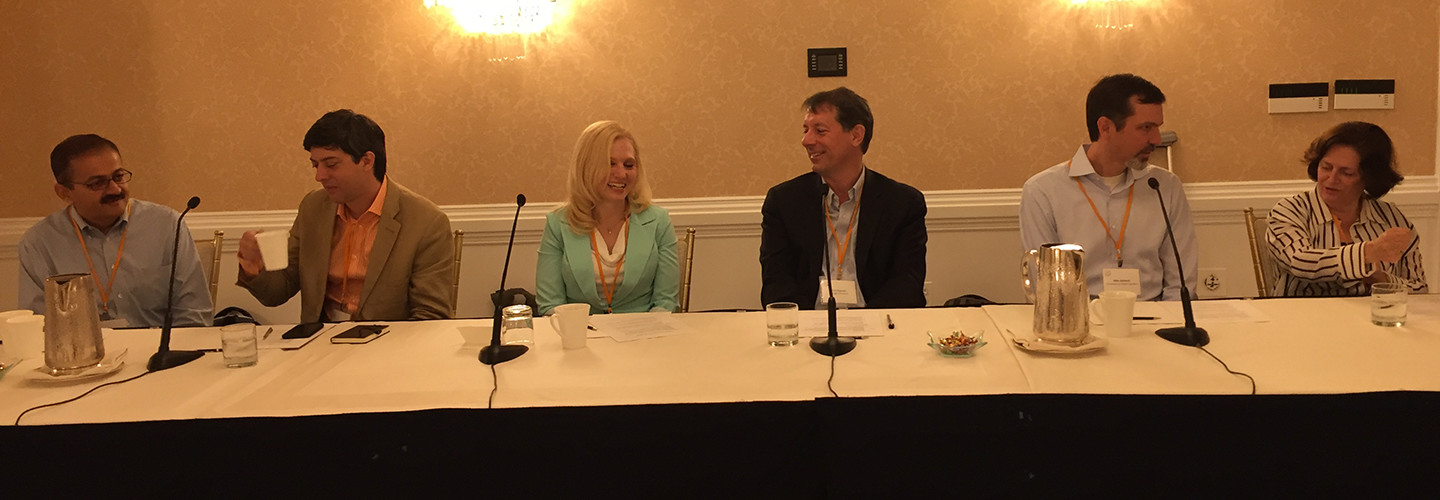Data Analytics Matures, with Plenty of Room for Continued Evolution
Data analysis experts from universities around the country gathered June 9 for a roundtable discussion on “Educating in a Data-Driven World,” hosted by Tableau Software at the St. Regis hotel in Washington, D.C. The six professors represented a range of fields — management and computer sciences, journalism, information systems, neuroscience and public policy — but they shared similar perspectives on where data analytics stands today and where college curricula have room to grow. Ben Jones, director of Tableau Public, moderated the discussion.
First Discover, Then Share
“Are we teaching people how to analyze data? I would say, absolutely,” said Vijay Khatri, associate professor of information systems at Indiana University and co-director of the Kelley Institute for Business Analytics. “They know how to analyze, but how do you use the output for decision-making? That is where the breakdowns happen.”
Jana Schaich Borg, a postdoctoral associate at Duke University, agreed. Her students, she said, struggle with the logical processes of identifying which questions they want data to answer and then determining how to get there.
Borg also pointed to a need for better communication skills. “Communication is often considered something totally separate, but I think it’s the No. 1 reason data projects usually fail,” she said. Researchers need such skills not only for successful teamwork, she said, but also to effectively communicate their results to others.
That emphasis on data presentation is a particular concern in journalism, said Cheryl Phillips, a former data innovation editor at The Seattle Times and now a Hearst Professional in Residence at Stanford University.
“I think we’re at the very beginning stages of being able to present and communicate information,” she said.
Phillips also noted that students need exposure to “real-world data,” likely to be far messier than the clean data sets they often encounter in the classroom.
The University of South Carolina’s Darla Moore School of Business, in fact, is adapting its curricula to better prepare students for the early stages of data manipulation, said Associate Professor of Management Science Mike Galbreth. “That’s based on direct feedback from the marketplace,” he said.
That emphasis on real-world application also factors into the types of fluency colleges need to teach, said Galbreth: “Our students need to be data-savvy managers and they need to be comfortable in data-driven organizations. To do that, you need to be able to talk to both worlds, to the technical side and to business leaders.”
An Interdisciplinary Direction
The roundtable also discussed the opportunities — and occasional challenges — of interdisciplinary collaboration in data analytics.
Stanford, for example, created a Computational Journalism Lab that develops projects involving multiple departments, said Phillips. She has co-taught journalism classes with a computer science professor, learning that both faculty and students need to learn the languages of each other’s disciplines.
“There’s a lot of room in classes across the board to collaborate with other professors so that your whole curriculum is more integrated,” she said.
Daniel Lopresti chairs the Lehigh University Department of Computer Science and Engineering and is director of the Data X initiative, an interdisciplinary center for research and learning. “My vision spans the entire institution,” he said.
Jon Schwabish is a senior research associate at the Urban Institute, as well as an adjunct professor at Georgetown University and a lecturer at the Maryland Institute College of Art. He notes that students in the various fields in which he teaches — art students versus business students, for example — approach data problems quite differently, pointing to the educational benefit of challenging students to think in unfamiliar ways.
The field of data analytics itself will continue to evolve, participants agreed, taking on new directions in machine learning, text analysis, social media analysis, data visualization, optimization modeling and other areas. As that occurs, they said, the ability to skillfully interpret and apply data findings will be one of the most important lessons that students can learn.
“What’s most important is not learning the tool, but learning the critical thinking that will enable you to use any tool,” Phillips said. “Because the tools are changing so quickly, and tomorrow it will be a whole different set.”








